The embedded asset does not exist:
Asset Type: Knoll_Document_C
Asset Id: 1413506620203
PAGENAME: Knoll/Knoll_Document_C/EmbedDocumentLink
Driven by the growth of technology startups and powered by the value for social networks, a new breed of workspace has emerged and “co-working” office spaces, leasable by the hour, day or month, are on the rise. Yet, despite the growth in popularity (from 703 in 2010 to 7000 global co-working spaces projected by 2016, DeskMag, 2013) little information is shared on the lessons learned from these highly dynamic spaces.
To this end, Knoll conducted a post-occupancy study of Galvanize 1.0, a technology business incubator, code school and shared workspace in Denver, Colorado to identify key insights from the success of their space and community. From individual freelancers to associates of high-growth companies, 41 out of the 300 members of the Galvanize community participated in the study. The purpose of the study was to extrapolate what we learned from Galvanize to create for more effective workspaces.
People are drawn to Galvanize for the vibrant energy, networking opportunities and community ties. Understanding the dynamics of this new way of working and why people are drawn to these spaces is critical for any organization in attracting and retaining talent.
Key Take-Aways
-
Discard the belief that co-working spaces only consist of members from Generation Y and do not appeal to Generation X and beyond.
-
A range of work needs and preferences must be supported in both primary workspaces as well as shared activity spaces.
-
While interaction with others is vital for exchanging ideas, the need for “quiet space” is crucial for focus and confidential work.
-
Members want technology features to offer connection to others at work.
Co-working spaces should appeal to both men and women
A blend of formal and informal work locations support diverse work needs and various social interactions.
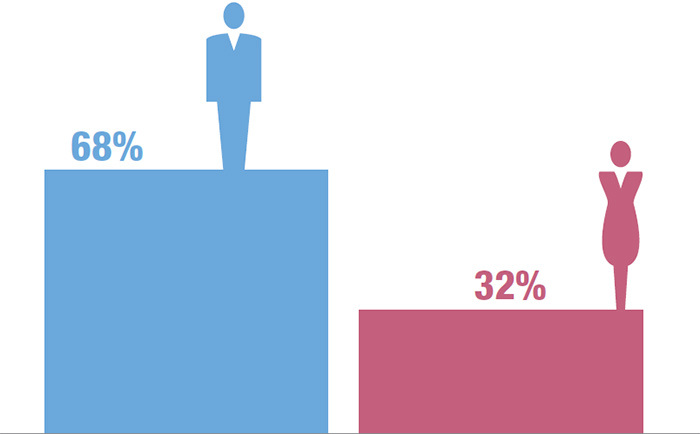
Women account for about one-third of all co-working members at Galvanize.
Co-working spaces should support the needs of a wide range of young to older workers
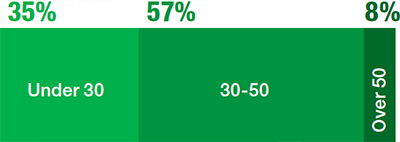
Ergonomic, agile seating supports a range of postures and a broad age range of workers.
Over half of all Galvanize members are between the ages of 30 and 50.
Work takes place in a wide variety of spaces within and outside the co-working environment
Freestanding, moveable furniture provides a responsive solution that can be changed based on the needs of the population.
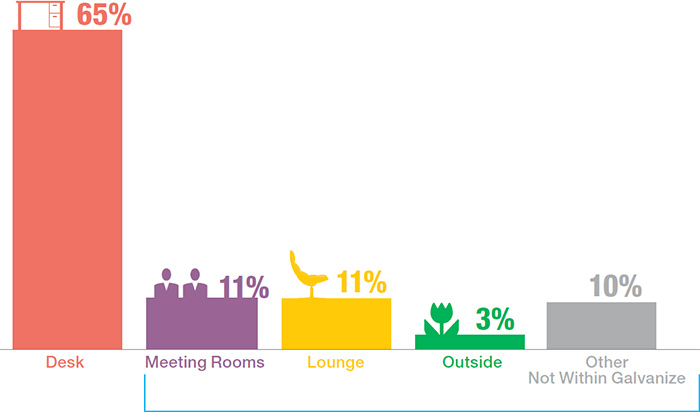
Despite the independent and “heads down” nature of their work, Galvanize members report spending a third of their time away from their desk.
Both focus work and interactions with others need to be supported within primary workspaces
A low overall horizon combined with properly placed screens and storage allows people to easily shift between heads down work and unplanned interactions.
When working in their primary space, Galvanize members split their time equally between focus work and interactions with others.

People desire the ability to shape their individual work experience
Adjustable elements—task lighting, monitor arms, height adjustable tables—allow people to fine tune their personal space to suit their changing work process.

About three-quarters of Galvanize members say a height adjustable table would best meet their work needs for flexibility.
The need for “quiet space” for focus work is essential—especially within open work environments
Enclosed refuge or enclave activity spaces along main circulations paths offer privacy for focus or confidential work.
Galvanize members use refuge spaces the greatest amount of time of any type of activity space.
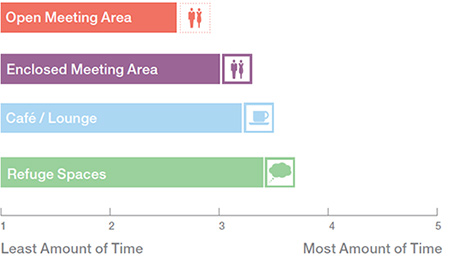
Members want technology features to offer connection to others at work—and to the broader community
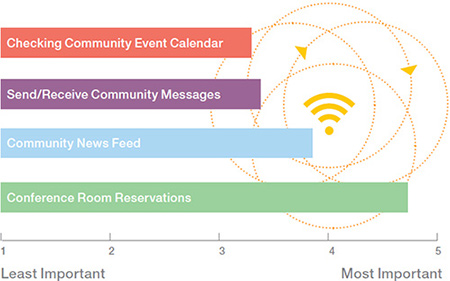
Cloud-based or wireless technology systems that are easily accessible by both users and guests deliver real-time collaboration and sharing.
Community building capabilities dominate the list of most highly valued technology features provided to Galvanize members.
The ability to express company image is important for organizations within co-working spaces
Logo boards and community outreach events provide companies the opportunity to display and highlight their unique brands.
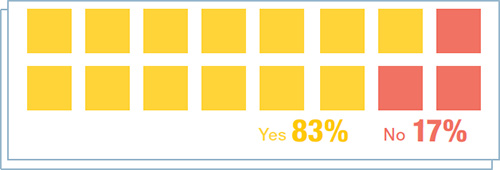
83% of Galvanize members report their brands are adequately represented in the community.
The embedded asset does not exist:
Asset Type: Knoll_Document_C
Asset Id: 1413506620203
PAGENAME: Knoll/Knoll_Document_C/EmbedDocumentLinkThe embedded asset does not exist:
Asset Type: Knoll_Document_C
Asset Id: 1413506620203
PAGENAME: Knoll/Knoll_Document_C/EmbedDocumentLink


























